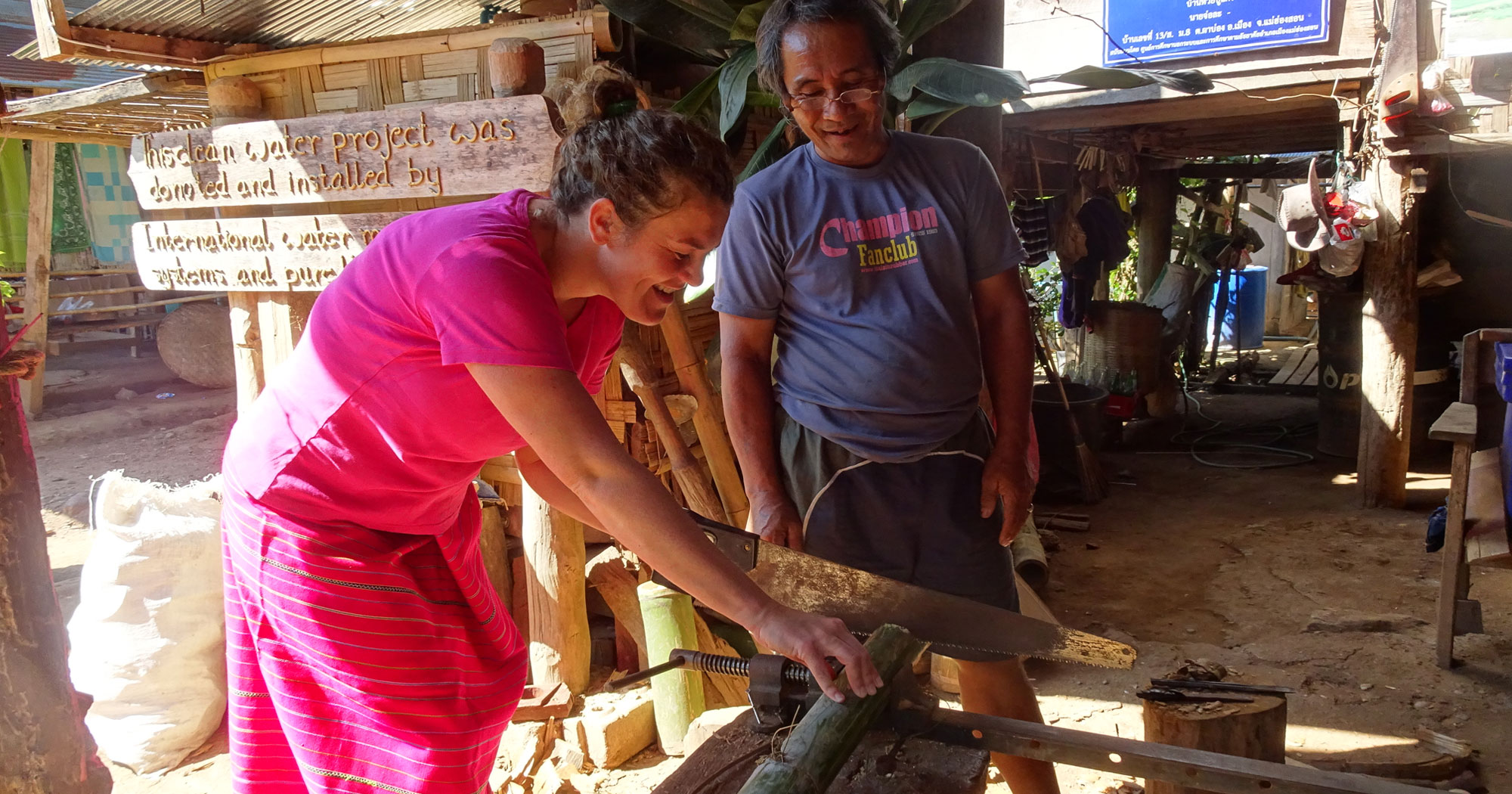Thailand receives more than 10 million tourists each year. Tourism is taking on massive forms here, especially in the coastal towns of the island of Phuket, among others. Bangkok’s busy streets and temples in Chiang Mai and Ayuthaya are also flooded with tourists. The mountain peoples in the Golden Triangle in the far north of Thailand mainly have to contend with the disadvantages of the large influx of tourists. The city’s major tour operators make tourist attractions of these special mountain peoples. You can check out the famous “long-necks” (Kayan women, originally from Myanmar). It’s like a zoo: you’re in line to look at them, you take some pictures and you go back on your way. There is no question of participation of the locals themselves: as long as it makes money. Fortunately, the Kayan village of Huay Pu Keng has made the transition to equal and respectful tourism, with fun tours and workshops.
 Sex tourism is also a big problem in Thailand. Especially in cities like Bangkok and tourist resorts like Pattaya, you will regularly be confronted with the old, Western men with a young, Thai girl on the arm. They often don’t seem to be older than 18, sometimes they are even younger. In Thailand, there is a lot of child sex tourism, which is a criminal offence. Although it is less common now, it is all too often the case that the police and the hotel bosses turn a blind eye. They just act like it doesn’t exist. Luckily, many organisations are active in stopping this malpractice, such as the global organisation ECPAT.
Sex tourism is also a big problem in Thailand. Especially in cities like Bangkok and tourist resorts like Pattaya, you will regularly be confronted with the old, Western men with a young, Thai girl on the arm. They often don’t seem to be older than 18, sometimes they are even younger. In Thailand, there is a lot of child sex tourism, which is a criminal offence. Although it is less common now, it is all too often the case that the police and the hotel bosses turn a blind eye. They just act like it doesn’t exist. Luckily, many organisations are active in stopping this malpractice, such as the global organisation ECPAT.
There are also good initiatives in Thailand, such as CBT-I, which stands for “Community Based Tourism Institute”. This development organisation (NGO) works with local communities in setting up and running tourism activities. CBT-I supports these local communities in various ways, for example with training, marketing and product development. But: the communities themselves are in charge! They decide how they want to set up tourism, what they want to achieve with it. CBT-I helps them to achieve their goals. Tourism is often a smaller part in addition to their daily work in fishing or agriculture. Therefore, the tourist groups are small and are not visited all the time. This way they can maintain their own way of life and they are not dependent on the tourist dollars. Tourism is seen as an additional source of income to provide for a living. For example, to improve education and health services.
More than 100 communities offer tourism activities through CBT-I, both in northern Thailand (near Chiang Mai and Mae Hong Son), the middle (Samut Songkram) and in the south (Nakorn Srithammarat and Koh Yao Noi). The travel company Sawadee Reizen visits the communities in Samut Songkram and Kiriwong with her Family Adventure. As a tour guide of these trips, this was a very special experience. In Samut Songkram we stayed in stilt houses along the Mae Klong River. The families live here from agriculture and fishing. Life takes place in and near the water. People wash themselves in the river (without having to suffer from the violent rapids), vendors sail with their goods along the houses. At night, during a boat trip, you can discover thousands of fireflies. You can also visit a family here that makes sugar from the coconut palm. In addition, it is very nice to help prepare the typical Thai meal. With a dictionary in hand, you can talk to each other a bit. A unique experience!
The village of Kiriwong, in the southern province of Nakorn Srithammarat, is a different experience. Here you will take a walk in the jungle of the Khao Luang Mountains, swim in the waterfalls, do a batik workshop, watch how rubber is made and attend a dance performance. The villagers here have a really good relationship with each other. In fact, in 1982 a joint bank account was opened. Those who need it will be financially assisted. Tourism revenue also goes to this common bank account, which is funded by communal projects.
If you are planning to go to Thailand on holiday, be sure to take a look at the CBT-I website. Through contact with the local families you get to know Thailand really well! For more information about CBT-I and community-based tourism projects, click here.

